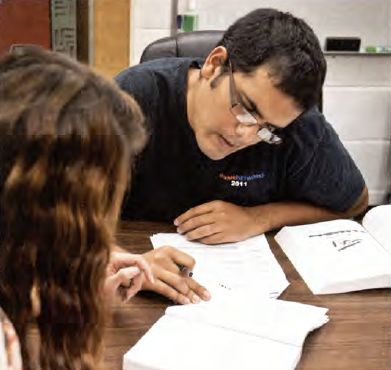
“Before the program was in place, there would be a number of students who would just fall off the radar,” Assistant Professor Magdalena Barrera said. “Those numbers have been reduced, and even in those cases where students face extraordinary difficulty, we at least know what is happening with them.” (Robert Bain photo)
For years, the Mexican American Studies department had been bedeviled with high failure rates among students of color who were taking its signature yearlong introductory historical survey course.
“We would lose 15 percent with Ds and Fs,” recalls department chair Marcos Pizarro. It was apparent that the students, many of whom were the first in their families to attend a four-year college, simple weren’t prepared for the rigors of post-secondary education.
In the fall of 2008, Pizarro decided to try something new. “I thought, ‘We could have master’s students serve as mentors to the undergraduates.'” The graduate students could serve as role models while imparting fundamental academic skills.
To find out what happened next, check out the College of Social Sciences newsletter (page 5).

